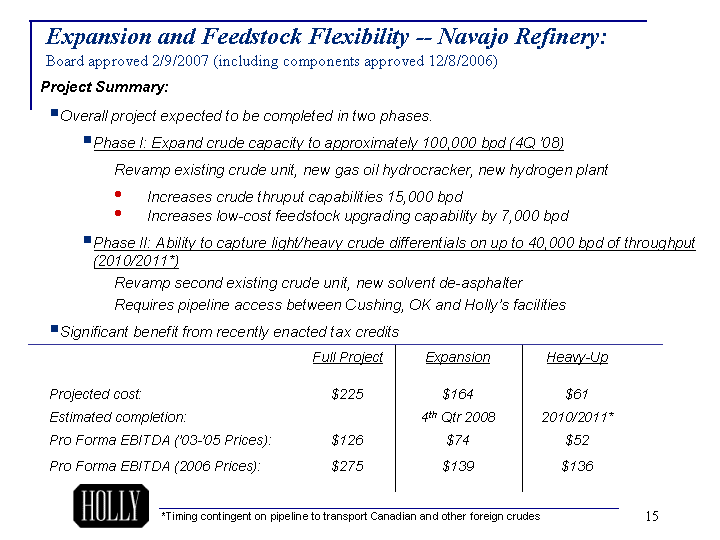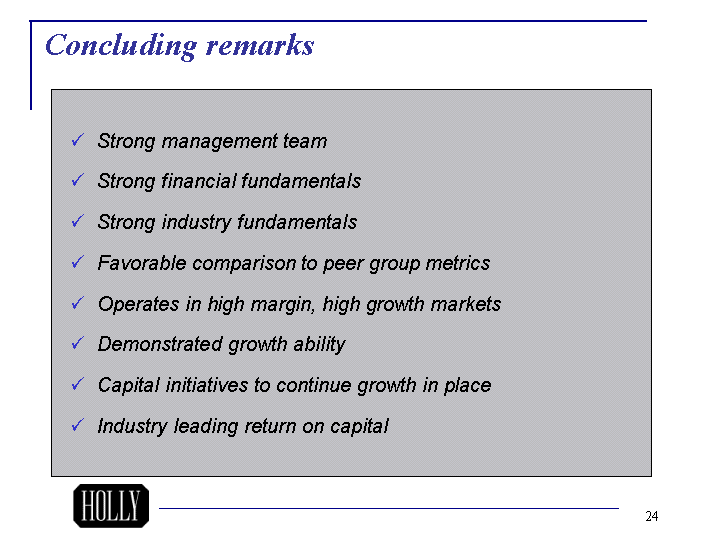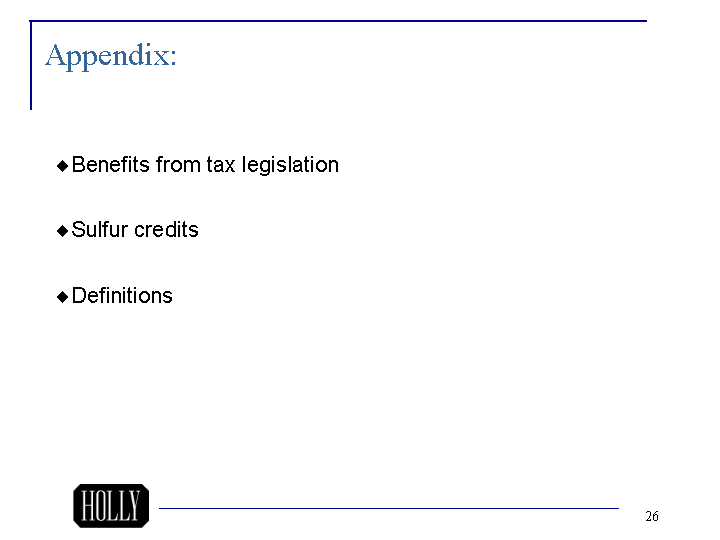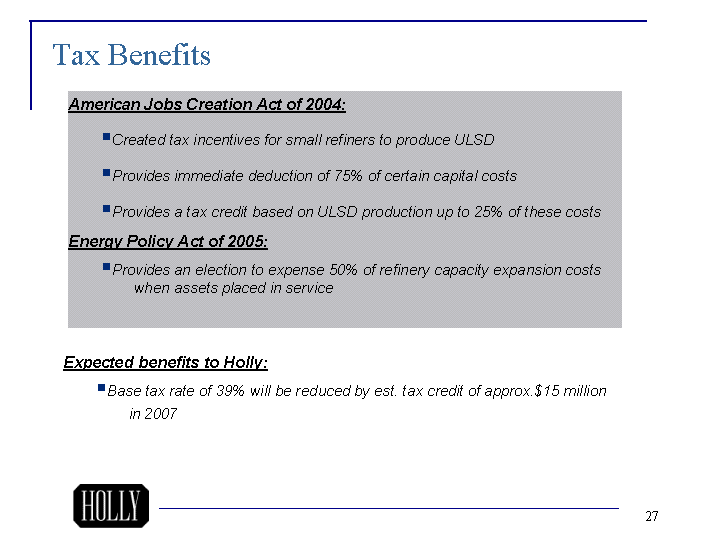Free signup for more
- Track your favorite companies
- Receive email alerts for new filings
- Personalized dashboard of news and more
- Access all data and search results
Filing tables
HF Sinclair similar filings
- 29 May 07 Holly Corporation Announces Increase in Regular Quarterly Cash Dividend
- 8 May 07 Holly Corporation Reports Record First Quarter Results
- 9 Apr 07 Departure of Directors or Principal Officers
- 28 Mar 07 Regulation FD Disclosure
- 13 Mar 07 Regulation FD Disclosure
- 15 Feb 07 Departure of Directors or Principal Officers
- 12 Feb 07 Holly Corporation Board of Directors Approves Capital Spending Projects
Filing view
External links





























